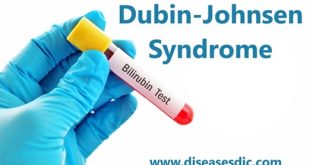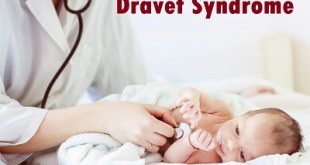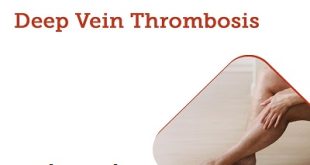Understanding Dystonia
Dystonia is a neurological disorder that causes excessive, involuntary muscle contractions. These muscle contractions result in abnormal muscle movements and body postures, making it difficult for individuals to control their movements. The movements and postures may be painful. Dystonic movements are typically patterned and repetitive.
It can affect any region of the body including the eyelids, face, jaw, neck, vocal cords, torso, limbs, hands, and feet. Depending on the region of the body affected, dystonia may look quite different from person to person. In addition to causing abnormal movements, depression and anxiety are common non-motor symptoms of dystonia.
Types of Dystonia
Dystonia can affect only one muscle or a group of muscles. There are five main types are as follows:
Focal dystonia- A single region, such as the hand or eyes, is affected. Cervical dystonia, blepharospasm (abnormal twitch of the eyelid), laryngeal dystonia and writer’s cramp are all examples of focal dystonia. If it only affects someone during specific activities, such as writing, it’s described as task-specific dystonia.
Segmental dystonia- Two or more connected regions of the body are affected. Cranial dystonia (blepharospasm affecting the lower face and jaw or tongue) is an example.
Multifocal dystonia- Two or more regions of the body that aren’t connected to each other, such as the left arm and left leg are affected.
Generalised dystonia- The trunk and at least two other parts of the body are affected. The legs may or may not be affected.
Hemidystonia- One entire side of the body is affected.
About 90% of all cases are either cervical dystonia (which affects the neck muscles) or blepharospasm (which affects the eyelids). These are both focal dystonia’s that tend to develop later in life. They don’t usually get any worse and no other muscles are affected.
Focal dystonia’s are the most common type of dystonia and with different effects:
- Cervical dystonia affects the neck muscles and can make the head, twist, shake or pull in one direction uncontrollably
- Oromandibular dystonia affects the jaw, tongue and mouth muscles and can lead to problems with eating or speaking
- Blepharospasm dystonia affects the muscles around the eyes and causes an abnormal twitch of the eyelid
- Writer’s cramp affects the hand and forearms and can lead to problems with writing
- Laryngeal dystonia affects the vocal cords or speech muscles which causes speech to become strained and weak
Childhood dystonia is usually different from adult dystonia. If it starts in childhood it usually begins in the leg or foot and commonly spreads to involve the entire body. If dystonia begins in adult life it tends to affects one part of the body, such as the neck or hand.
Dystonia risk factors
Scientists have not yet determined the exact cause of dystonia. But certain factors can put you at risk for the disorder. These include:
- Genetic predisposition
- Injury to your brain or nervous system
- Stroke
- Taking certain medicines (such as neuroleptics)
- Infections (viral, bacterial, or fungal)
- Poisoning (such as lead)
- Performing highly precise hand movements (such as musicians, artists, or engineers)
Causes
Most cases do not have a specific cause. It seems to be related to a problem in the basal ganglia. That’s the area of the brain that is responsible for initiating muscle contractions. The problem involves the way the nerve cells communicate.
Acquired dystonia is caused by damage to the basal ganglia. The damage could be the result of:
- Brain trauma
- Stroke
- Tumor
- Oxygen deprivation
- Infection
- Drug reactions
- Poisoning caused by lead or carbon monoxide
Idiopathic or primary dystonia is often inherited from a parent. Some carriers of the disorder may never develop a dystonia themselves. And the symptoms may vary widely among members of the same family.
Symptoms
Symptoms may start slowly you might notice that your handwriting is deteriorating. Sometimes you may get cramps in the feet or, more noticeably, you may lose control over a foot and find that it contracts or drags along.
Other symptoms may can include:
- Involuntary and rapid blinking that you can’t stop
- A sudden tightening or turning of the neck to one side, particularly when you’re feeling fatigued or stressed
- Difficulty speaking
- A tremor in your voice
- Symptoms that worsen with tiredness, stress, or lots of physical activity
Complications
Depending on the affected area and the type of dystonia, some complications are:
- Physical disabilities that hamper daily activities or specific tasks
- Difficulty with vision due to the effect on your eyelids
- Struggle with jaw movement, speech or swallowing
- Pain and fatigue because of regular contraction of muscles
- Depression, anxiety and social withdrawal
It is not a very well-known disorder and hence it needs all the more attention. While it cannot be cured but you can certainly stay away from the possible causes. Most importantly, one must stay aware of one’s body and if you feel any involuntary unusual activity in your body, you must seek out medical assistance so that you can avoid the serious complications that dystonia can have.
Diagnosis and test
To diagnose dystonia, your doctor will start with a medical history and physical examination.
To determine if underlying conditions are causing your symptoms, your doctor might recommend:
Blood or urine tests: These tests can reveal signs of toxins or of other conditions.
MRI or CT scan: These imaging tests can identify abnormalities in your brain, such as tumors, lesions or evidence of a stroke.
Electromyography (EMG): This test measures the electrical activity within muscles.
Genetic testing: Some forms of dystonia are associated with certain genes. Knowing whether these genes are present can help guide treatment.
Treatment and medications
To manage your muscle contractions, your doctor might recommend a combination of medications, therapy or surgery.
Medications
Injections of botulinum toxin (Botox, Dysport, others) into specific muscles might reduce or eliminate your muscle contractions and improve your abnormal postures. Injections are usually repeated every three to four months. Side effects are generally mild and temporary. They can include weakness, dry mouth or voice changes.
Other medications target chemicals in your brain (neurotransmitters) that affect muscle movement. The options include:
Carbidopa-levodopa (Duopa, Rytary, others)- This medication can increase levels of the neurotransmitter dopamine.
Trihexyphenidyl and benztropine (Cogentin)- These two medications act on neurotransmitters other than dopamine. Side effects can include memory loss, blurred vision, drowsiness, dry mouth and constipation.
Tetrabenazine (Xenazine) and deutetrabenazine (Austedo)- These two medications block dopamine. Side effects can include sedation, nervousness, depression or insomnia.
Diazepam (Valium), clonazepam (Klonopin) and baclofen (Lioresal, Gablofen)- These medications reduce neurotransmission and might help some forms of dystonia. They may cause side effects, such as drowsiness.
Therapy
Your doctor might suggest:
- Physical therapy or occupational therapy or both to help ease symptoms and improve function
- Speech therapy if dystonia affects your voice
- Stretching or massage to ease muscle pain
Physical therapy for dystonia
Surgery
If your symptoms are severe, your doctor might recommend:
Deep brain stimulation- Electrodes are surgically implanted into a specific part of your brain and connected to a generator implanted in your chest. The generator sends electrical pulses to your brain that might help control your muscle contractions. The settings on the generator can be adjusted to treat your specific condition.
Selective denervation surgery- This procedure, which involves cutting the nerves that control muscle spasms, might be an option to treat some types of dystonia that haven’t been successfully treated using other therapies.
Alternative medicine
Alternative treatments haven’t been well-studied. Ask your doctor about complementary treatments before you start. Consider:
Meditation and deep breathing- Both might ease stress that can worsen spasms.
Biofeedback- A therapist uses electronic devices to monitor your body’s functions, such as muscle tension, heart rate and blood pressure. You then learn how to control your body responses, which might help reduce muscle tension and stress.
Yoga- Yoga combines physical postures, breathing techniques, and meditation or relaxation.
Prevention of Dystonia
Currently there are no medicines to prevent Dystonia or ease its progression.
- Some of the treatment options can reduce the severity of the symptoms. Doctor may recommend certain changes in the lifestyle or various home remedies.
- Yoga, meditation, or deep breathing can help in minimizing the effects of this disease. Also, stress management, social support, or positive self-talk can help.
 Diseases Treatments Dictionary This is complete solution to read all diseases treatments Which covers Prevention, Causes, Symptoms, Medical Terms, Drugs, Prescription, Natural Remedies with cures and Treatments. Most of the common diseases were listed in names, split with categories.
Diseases Treatments Dictionary This is complete solution to read all diseases treatments Which covers Prevention, Causes, Symptoms, Medical Terms, Drugs, Prescription, Natural Remedies with cures and Treatments. Most of the common diseases were listed in names, split with categories.







